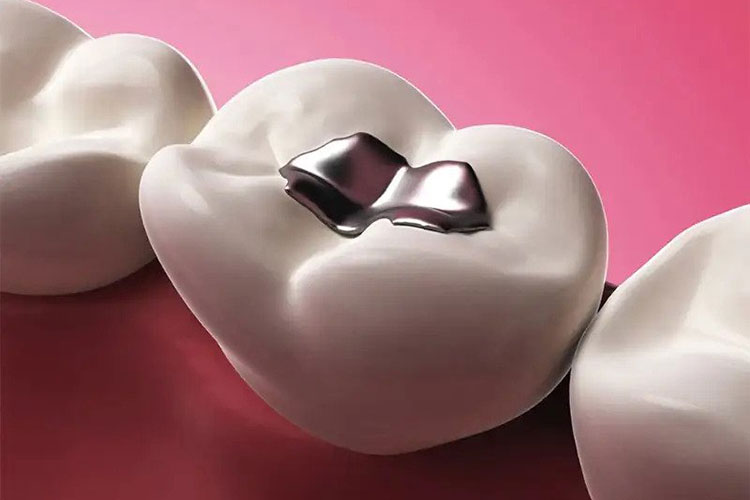If you’ve had one or more fillings, then it was most likely filled in with a grey metal amalgam.
You may see these metal amalgam fillings if someone tilts their head back and enjoys a good laugh. Historically, these metal amalgam fillings were the only filling material available, so if you are over the age of 40 and have had a cavity, then your mouth is likely still home to one of the old amalgam fillings. However, they have now fallen out of favor due to their esthetics and chemical makeup.
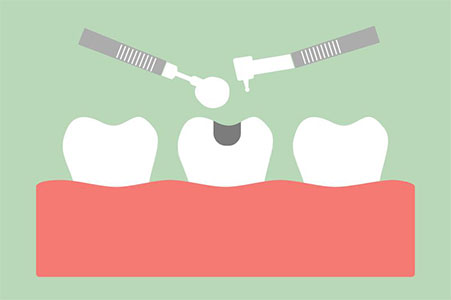
What is an amalgam filling?
Amalgam is a dental alloy composed of powdered silver, tin, and copper mixed with small liquid mercury. When the powders and mercury are mixed (or amalgamated – hence the name), they react to form a very durable metal compound that has been used for many decades to fill cavities in teeth. In addition, amalgam has some respectable properties – including the fact that they are very wear-resistant and can survive in the mouth for a very long time.
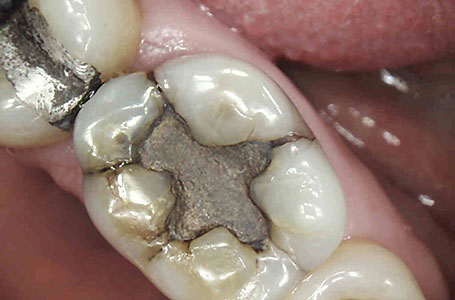
Why should I replace an amalgam filling?
There are two main reasons St. Lawrence Dentistry may recommend replacing an amalgam filling. The first reason is visual or x-ray evidence that there is a cavity around or underneath your amalgam filling. The presence of a cavity indicates a leaking filling leaking, allowing bacteria to penetrate around the filling and into your tooth. Early warning signs include chipping of the filling material at the margins where the filling meets the tooth, cracks within the filling material, or significant discoloration of the surrounding tooth structure that would indicate underlying corrosion of the filling from fluid leakage.
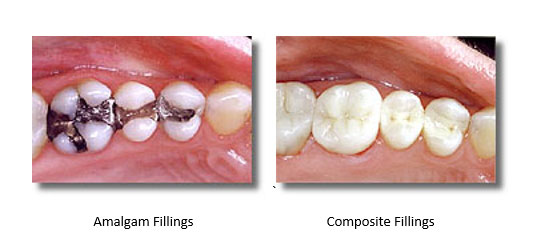
The second main reason it may be good to replace an amalgam filling is that there is visual evidence of cracks or fracture lines in your tooth around the filling. It often does not present with symptoms such as hot/cold sensitivity or chewing pain until the crack has progressed significantly. Amalgam fillings are not typically “bonded” to your teeth – they are mechanically locked into the tooth and stay in place due to a small amount of expansion of the material during the initial setting and the corrosion of the metal alloy over time. This very same expansion, coupled with constant stress and strain on your tooth, can contribute to tooth cracking, fracturing, or splitting. It is considered a mechanical failure of the tooth, which would require immediate attention. A large enough crack or split could render the tooth non-restorable. In this scenario, you would need your tooth extracted. To fix cracks or fractures that are restorable, Drs. Mastropole and Hawryluk will prescribe either the placement of bonded tooth-colored fillings, ceramic onlays, or crowns.

How is an amalgam filling replaced?
When it has been agreed upon to replace an amalgam filling, the first step is isolating and ventilating the area properly. It will prevent any particles or fumes produced from the filling removal from being ingested. Often, your doctor will remove the filling by carefully cutting it into small pieces, which will then essentially “fall out” of the tooth. This method minimizes trauma to the tooth and ensures that the removal is minimally invasive. After the filling removal, Dr. Mastropole will clean the underlying tooth surface and remove any underlying decay or silver tarnish if necessary. Sometimes a tooth can become permanently stained from the amalgam filling’s tarnish, leaving the tooth with a grayish hue. Once Dr. Mastropole is happy with the preparation, he can restore the tooth. During this time, the dentist will assess the tooth cracks. Sometimes, a cracked tooth may need a root canal if the crack has allowed bacteria to invade the tooth’s internal nerve and blood supply.
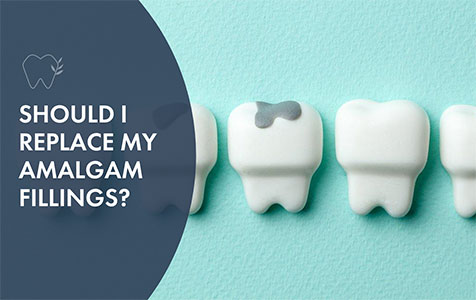
Restoration of a tooth that previously had an amalgam filling most commonly involves three choices: a bonded white filling, a ceramic or metal onlay, or a crown. Drs. Hawryluk and Mastropole will recommend the most appropriate restoration for the situation. For example, a white filling may help strengthen a weakened tooth through its nature, bonding the walls of the tooth back together. This type of repair is most successful when replacing only a small amount of tooth structure.

On the other hand, a crown or onlay may be a longer-lasting solution due to their increased strength and the fact that they usually cover and entirely protect the weakened tooth inside them. In this way, they act as a protective shield over the tooth. As a result, these repairs tend to last longer and are best suited for replacing more extensive restorations.
Please also visit our article, which reviews our technique to remove metal fillings safely:
Safely Removing Amalgam Fillings
We hope you have enjoyed our article. Thank you for reading it!
- Sleep Dentistry: Enhancing Comfort and Care During Dental Procedures - July 11, 2024
- The Revolutionary Injection Molding Technique for Composite Veneers - June 27, 2024
- Why Are Third Molars Called “Wisdom Teeth”? - June 19, 2024



